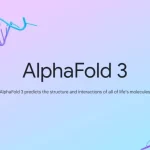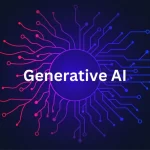
The Synergy of Human Intelligence and AI: Insights from Quantitative Biology
January 31, 2024Life Science Researchers Explore the Symbiotic Relationship between Humans and Artificial Intelligence
In a groundbreaking exploration of the evolving landscape of artificial intelligence (AI) and its implications for understanding the human experience, a series of peer-reviewed articles published in the journal Quantitative Biology sheds light on the potential synergies between human and artificial intelligence.
The articles delve into the multifaceted aspects of AI’s role in comprehending human health and our intricate biology. While acknowledging the limitations of AI in truly grasping emotions and original creativity, the consensus among researchers is that AI can significantly contribute to advancing our understanding of physical well-being and diseases.
The papers, encompassing editorials, perspectives, and commentaries, collectively assess the rapid development of AI, with particular attention given to Chat GPT. Life science researchers are exploring ways to harness AI tools to enhance both human health and understanding.
Michael Q. Zhang, the Cecil H. and Ida Green Distinguished Chair of Systems Biology Science and professor of biological sciences at the University of Texas, Dallas, emphasized the transformative impact of machine learning and AI on science and technology. He highlighted the role of Quantitative Biology as a platform for fostering intellectual discussions on this transformative topic.
In his editorial, “Dialog between artificial intelligence & natural intelligence,” Zhang envisions a conversation between AI and natural intelligence (NI). The debate revolves around their fundamental purposes and ultimate uses, with NI focusing on population survival and AI aiming to extend and maximize human capability.
A pivotal study led by Xuegong Zhang, professor of automation at Tsinghua University, proposes the concept of Digital Life Systems (dLife). This paradigm integrates AI as a means of digital investigation to comprehensively understand and model complex biological phenomena. The goal is to create a digital twin of full systems, including individual human bodies, enabling quicker and more accurate insights into potential treatment benefits or side effects.
The ambitious dLife framework requires collaborative research across disciplines, starting with the design of a basic informatic framework to serve as its operating system.
Researchers, led by Gangqing Hu from West Virginia University, introduced the OPTIMAL model, which empowers beginners in bioinformatics by optimizing prompts through iterative mentoring with a large language model (LLM) chatbot. The model demonstrated its feasibility in enhancing students’ coding skills and creative thinking.
Despite the advancements, experts emphasize that ChatGPT and similar models are not the final frontier. Jianfeng Feng, dean of the Institute of Science and Technology for Brain-Inspired Intelligence at Fudan University, argues for a comprehensive understanding of the dynamic operation of the human brain. He advocates for a probabilistic approach and discusses ongoing research to simulate the entire human brain with 86 billion neurons simultaneously.
The overarching theme of these Quantitative Biology articles suggests that the collaborative integration of human and AI capabilities is the optimal path for advancing life science research and technology.
Source: Higher Education Press


















